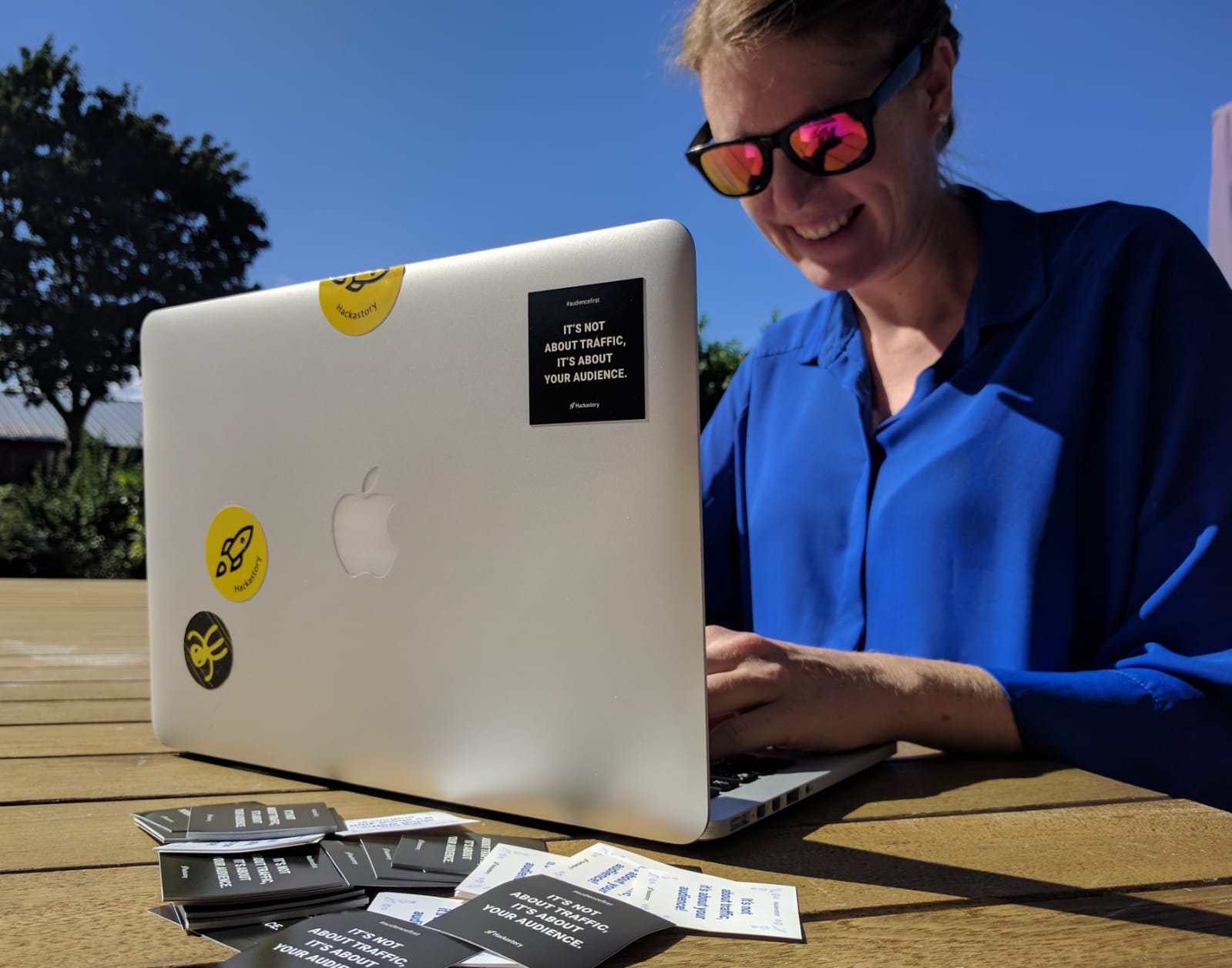Being a journalist in the digital era isn’t easy. We know. For years we have been working with newsrooms and we see the same things happening everywhere. You are constantly running from deadline to deadline. Constantly feeling like you don’t have enough time, while you see your news consumers running the other way or getting older.
A journalist at Dutch current affairs program told us that his audience is literally dying: a few years ago they were 50+, now they’re going towards 70. Obviously, the world changed in the meantime. But in the newsroom, there is still the same rhythm of continuous production that belong to a different era. What if you have the time to stand still for a moment and rethink what it actually is you and your colleagues are meant to be doing? What is it that you do? How can you do less, have more time and create a bigger impact? The answer: focus on your audience and find your value.

Find your purpose
Ask yourself: What is it we are trying to do? Is it clear what it is to everyone? “Understanding that basic mission of the organisation is really important before you start building value. If you don’t have a mission, how can you start building value around it?” Professor Robert G. Picard, a senior research fellow at Reuters Institute and the University of Oxford, states that it all starts with finding your purpose.
“Right now, editors are trying to be everything to everybody and they still believe quantity is more important rather than the quality of the stories.”
– Professor Robert G. Picard
We also saw this at Dutch regional broadcaster RTV Oost, at TV channel RTL News, the BBC
“As long as that leads your operations, whether it’d be in print or in digital, you’ll never be able to create the greater kind of in-depth analyses and explanations which give value (..)”
– Professor Robert G. Picard
Kill your darlings
Chequeado, a leading Argentinian based fact-check agency, does this for years now. “We only do things if we are convinced that it fits and respects our brand. We are running a marathon not a 100-meter sprint. You have to have a long-term vision”, told Laura Zommer, director of Chequeado. We were doing embedded research at their headquarters to learn more about their challenges and opportunities. Currently they’re reaching out to a new audience and looking for ways to have an impact with people who are not yet their fans. They are still working on that, but the results so far are proving they are receiving more trust from their audience and fostering a sustainable workflow in the newsroom because they prioritize according to their mission. Nowadays they really go beyond their analytics by figuring out which impact goals they want to reach and which impact they are already having. They don’t only look at the numbers, but critically review the human aspect of their data: their audience. The impact goals they want to measure are not just KPI’s you can download from Google analytics. They also look at offline impact.
Every journalist can make twenty stories a day if they have to. You know how it goes: a few hundred words and done. But has it depth? Does your writing deliver value to your audience? “Why don’t you just say: we’re not going to do that. We’re just going to take people off and give them one important story a day or even one big story a week, which would result in more interesting stories”, says Picard,
“It’s not like there are any journalistic rules that require you to publish those twenty stories a day. It’s not like this has a time limit.”
– Professor Robert G. Picard
Prioritize
So, now you don’t have to do everything anymore. Ask yourself, is it true that we don’t have time? Or do we maybe have trouble spending our time in the most effective way because ,? It sounds like this big cliche, and it’s even easier said than done, but prioritizing is one of the most important things in getting stuff done without ‘losing it’. Put your time and audience first. Editor Johan from Dutch regional broadcaster RTV Oost said to us during our embedded training: “I want less subjects, but more in-depth reporting. That’s impact. This is a big win, it will bring a bit of tranquillity into the newsroom, and it will also help create the impact we want on our audience.”
No ego anymore

Work together, combine all the superpowers in your newsroom. Why should you do everything on your own? Let go of that ego. During our embedded training at RTV Oost, a reporter said: “Consult each other early on instead of just keeping it to yourself, do it all alone. We’re in this together.” When we talked to him about having no ego in journalism, his mind was blown. Why do it all on your own? Be more open to your colleagues and your audience. It’ll give your media company more purpose in this digital climate. Think about your audience. Know, understand and reach them better.
Do you want to know more about optimizing your workflow and learn to create more quality journalism without burning out? Sign up for our newsletter and keep on track with our work, tips, and tricks.